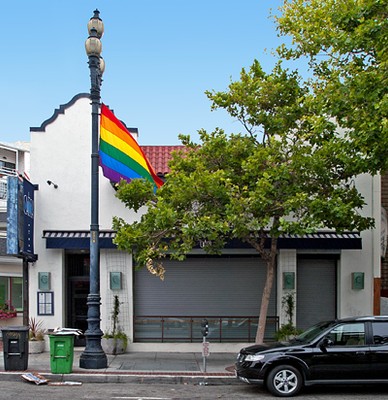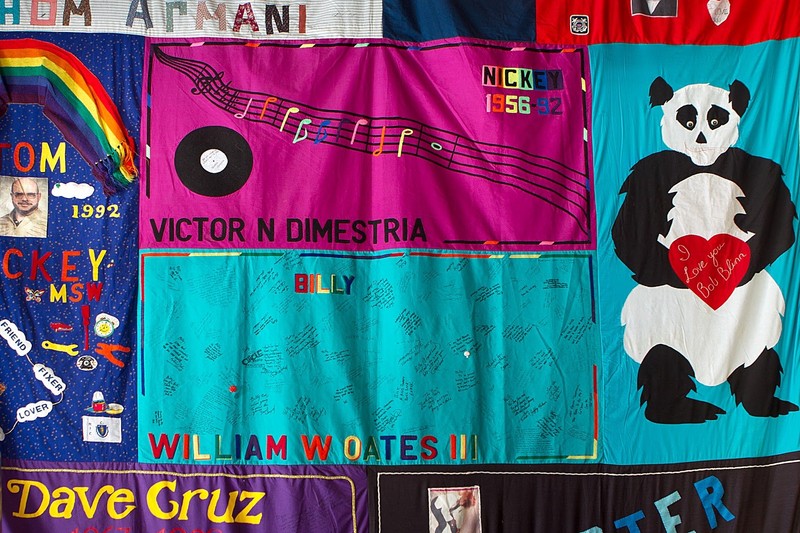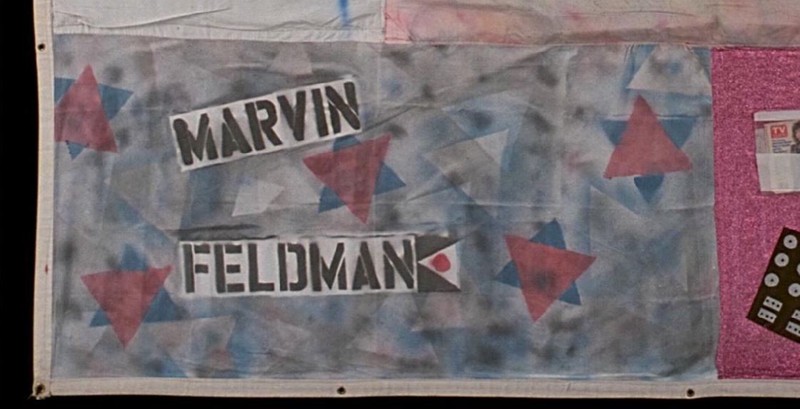Jose Theatre / NAMES Project Building
Introduction
Text-to-speech Audio
Images
The Jose Theatre/NAMES Building in 2008, before being converted into Catch, a seafood restaurant, in 2012

Patches from the AIDS Quilt which still hang in the building today

Obituary for 33-year-old Marvin Feldman, whose death from AIDS-related complications in 1986 motivated Cleve Jones to create the AIDS Memorial Quilt
.jpg)
The first panel of the AIDS Memorial Quilt created by Cleve Jones in honor of his friend Marvin Feldman

Backstory and Context
Text-to-speech Audio
Built in 1913, this small building was originally known as the Jose Theatre by residents in the Castro District and was used as a movie theater until 1919. Beginning in the 1920’s, the Jose Theatre was used as a storefront by multiple businesses. This continued all the way through the 1960’s and 1970’s, as population demographics shifted and the Castro District was transformed from a working class Irish-Catholic neighborhood into one of the largest and most active LGBTQ enclaves in the country. By the early 1980’s, residents of the Castro began noticing the early stages of what would soon become one of the deadliest epidemics in world history- AIDS. In 1985, the San Francisco Chronicle famously reported that over 1,000 San Franciscans had died of AIDS-related complications. The majority of these deaths were gay men and transgender people living in the Castro District. In metropolitan areas across the country- including San Francisco- individuals with AIDS were dying so rapidly that many never even received funerals. It was this stark reality that would inspire the largest folk art memorial project in history.
On November 27, 1985, gay community activist Cleve Jones led a candlelight memorial march for his friend, former City Supervisor Harvey Milk, who had been assassinated alongside Mayor George Moscone seven years prior. During the march, Jones handed out cardboard signs with markers to members of the crowd, instructing them to write the names of people they knew who had died from AIDS. Later that night, Jones and the other marchers had the signs taped together on the outside of the old federal building. To Jones, the end result resembled a quilt- giving him the idea for the NAMES Project.
Cleve Jones worked with friends and other community activists to begin making panels the following year. Each quilt was 3 feet by 6 feet- the size of a grave- and bore the name of an AIDS victim along with messages and designs that memorialized the person. Jones made the first quilt in memory of his friend- Marvin Feldman- who had died on October 10, 1986 of AIDS. He was 33 years old. By the summer of 1987, the NAMES Project had created over 100 quilt panels. In June, they leased the old Jose Theatre storefront at 2362 Market Street to set up a work space and storage for the panels. Lists of supplies that were needed were taped to the windowfront, and the items- sewing machines, thread, office supplies- quickly streamed in along with volunteers eager to help. Forty panels of the quilt were first shown during the June 1987 San Francisco Lesbian and Gay Freedom Day Parade.
Word spread throughout the country and the NAMES Project received hundreds of letters and quilt panels from New York, Philadelphia, Atlanta, and Los Angeles. One mother traveled by bus from her hometown in West Virginia to personally deliver a panel she had secretly made for her gay son who had passed away. When asked why she didn’t just send it in, she replied that she couldn’t just put her son in an envelope and mail him away. She had to see the place where he would be remembered.
On October 11th of 1987, the 1,920 panels of the AIDS Memorial Quilt were laid on the Mall in Washington D.C. during the National March on Washington for Gay and Lesbian Rights. Pieced together, the quilt took up over an acre of ground. That weekend, half a million people visited the Quilt. The response was so enormous that the NAMES Project organized a four-month tour in 1988 to display the Quilt in cities across the United States. By the end of the tour, the Quilt had tripled to include 6,000 panels. The Quilt was displayed at the National Mall again in 1988 and in 1989, raising hundreds of thousands of dollars for AIDS charities. In 1989, the AIDS Memorial Quilt was nominated for a Nobel Peace Prize. By 1996, the Quilt had grown to 40,000 panels representing individuals from every US state and 28 countries around the world. With the help of 10,000 volunteers, it was finally displayed in its entirety on the National Mall in October of that year. An estimated 1.2 million people visited the massive memorial- now spanning 26 football fields. President Bill Clinton, First Lady Hillary Clinton, and Vice President Al Gore all walked through the display.
In 2001, the NAMES Project and the AIDS Memorial Quilt moved from its longtime headquarters on Market Street to a larger, temperature-controlled space in Atlanta provided by the CDC. The building has since been converted to a seafood restaurant called Catch. The restaurant commemorates the history of its location with a wall decorated by quilt panels. Today, more than half of the AIDS Memorial Quilt is shown in an annual tour across the United States beginning on December 1st- World AIDS Day. Weighing 54 tons, the Quilt has grown to 48,000 panels which memorialize over 100,000 individuals, making it the largest community arts project in existence. New panels are still added every year.
Sources
Associated Press. AIDS quilt moving to Atlanta from SF, The Berkeley Daily Planet. February 7th 2001. Accessed October 28th 2020. https://www.berkeleydailyplanet.com/issue/2001-02-07/article/3347?headline=AIDS-quilt-moving-to-Atlanta-from-SF--The-Associated-Press-.
City and County of San Francisco. Ordinance Designating 2362 Market Street, The Jose Theatre/NAMES Project Building, As Landmark No. 241 Pursuant To Article 10, Sections 1004 And 1004.4 Of The Planning Code., City and County of San Francisco. May 11th 2004. Accessed October 27th 2020. http://ec2-50-17-237-182.compute-1.amazonaws.com/docs/landmarks_and_districts/LM241.pdf.
Jones, Cleve. Dawson, Jeff. Stitching a Revolution - The Making of an Activist . Edition 1st. HarperOne, 2000.
Noe Hill. San Francisco Landmark #241 Jose Theater / NAMES Project, NoeHill. Accessed October 27th 2020. https://noehill.com/sf/landmarks/sf241.asp.
The NAMES Project. THE HISTORY OF THE QUILT, National AIDS Memorial. Accessed October 28th 2020. https://www.aidsmemorial.org/quilt-history.
https://noehill.com/sf/landmarks/sf241.asp
http://catchsf.com/gallery/
https://www.hiv.gov/hiv-basics/overview/history/hiv-and-aids-timeline
https://www.aidsmemorial.org/interactive-aids-quilt
